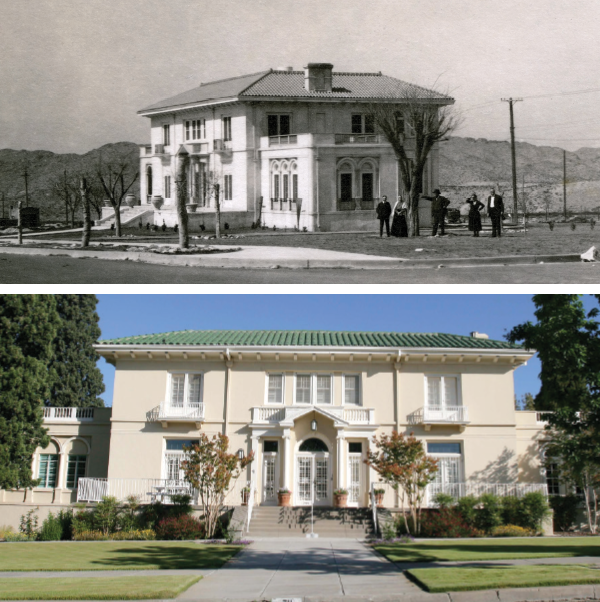
If you’ve driven up Cincinnati Street in the historic Kern Place neighborhood, you’re sure to have seen it.
The sprawling, lush landscape and nearly century-old Hoover House, with its Greek Ionic-style columns, are enough to catch anyone’s eye.
Donated to The University of Texas at El Paso in 1965, it is the only presidential residence owned by an institution in The University of Texas System.
The house has played an important social role for UTEP over the years, hosting dozens of dignitaries — from former Gov. Ann Richards to former first lady Laura Bush — and dozens of celebratory and ceremonial events.
“The Hoover House is a place where university history is made,” said UTEP President Diana Natalicio, who moved into the house when she became president in 1988. “Each year, we welcome UTEP students, alumni, faculty, staff, friends and supporters to a variety of university events held in this beautiful setting. We are deeply grateful to the Hoover family for their generosity in making this very special El Paso residence a part of our UTEP campus.”
Built in 1917 by Richard Dudley, a Downtown El Paso banker, the home was one of the first houses erected in the Kern Place neighborhood. Living space in the house measures 7,063 square feet, while the whole property is nearly 40,000 square feet. During World War II, the home was acquired by Mr. and Mrs. Robert Thompson Hoover, who would later donate it to UTEP.
Their daughter, Louann Hoover Feuille, said, “I was about 15 when we first moved into the house, but the people who really enjoyed it were my children.”
After Feuille and her two brothers got married, they would let the children stay with their grandparents over the weekends. At one point, a total of 12 grandchildren trooped into the house every Saturday and Sunday.
There, they played beauty parlor, school, hide and seek, and tag and could be seen running up and down the grand staircase constantly. At night, they would cram into one of the upstairs bedrooms that was filled from end-to-end with beds.
“My grandma didn’t seem to mind the mess that we made,” said Cita Sanders, Feuille’s daughter. “Thinking back, I am surprised we didn’t drive everyone crazy with the chaos.”
If at some point the mass of children was misbehaving, the housekeepers would warn that “Don Roque” was going to get them.
“There was a subbasement in the house that was just a raw, unfinished space filled with rocks and spider webs,” Sanders said. “[The housekeepers] would open this door and way back in the corner you could see this large figure on a horse with a sombrero — that was Don Roque.
“Years later we saw [the figure] up close and saw that the man was just made of straw, but at the time you could bet that made us behave,” she said with a laugh.
The children livened up the house for many years, but in 1960, Robert Hoover died.
“My mother lived there for a while, but I think she felt she didn’t need such a large space for herself anymore, so she gifted it to UTEP,” Feuille said.
Since then, the Hoover House has been home to five UTEP presidents, including Natalicio.
“I was glad when Dr. Natalicio moved in because she has really used it for a lot of functions,” Feuille said. “The house was always a lively place and is meant for company.”
Nadia M. Whitehead is a former writer for UTEP’s University Communications office.
